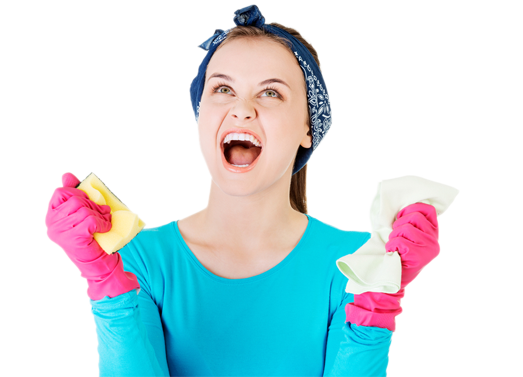Give Your Stovetop a New Life: Remove Burnt-On Residue
Posted on 25/05/2025
Give Your Stovetop a New Life: Remove Burnt-On Residue
Is your kitchen stovetop marred by stubborn, burnt-on residue? Cooking up delicious meals often leads to spills and splatters, but over time, these can form tough layers of grime. Thankfully, restoring your stovetop's shiny finish is easier than you think. In this comprehensive guide, we'll explore expert tips and proven techniques to remove burnt-on residue from your stovetop and keep it spotless for years to come.
Why Cleaning Your Stovetop Matters
- Hygiene: A clean stove discourages bacteria growth and prevents unsanitary cooking conditions.
- Efficiency: Burnt-on buildup can interfere with heating and affect cooking outcomes.
- Longevity: Regular cleaning extends the lifespan of your stovetop and appliances.
- Appearance: Gleaming appliances make your kitchen look inviting and well cared for.
Common Causes of Burnt-On Residue
Before we dive into methods to remove burnt-on stains from your stovetop, let's look at why these marks occur. The most common causes include:
- Boil-overs from soups, sauces, or pasta water.
- Unattended spills during high-heat cooking.
- Grease splatters left uncleaned for long periods.
- Sugar-based spills that caramelize and harden on burner surfaces.
Prompt cleaning can prevent these stains from becoming permanent fixtures on your stove.

Essential Supplies for Stovetop Cleaning
Gathering the right tools and materials makes tackling burnt-on residue removal much easier. Here's what you'll need:
- Baking soda - a gentle, natural abrasive.
- White vinegar - excellent for cutting grease and dissolving mineral stains.
- Dish soap - effective for breaking up oily messes.
- Non-abrasive scrubbing pads or sponges.
- Plastic scraper (never metal!) or old credit card.
- Microfiber cloths for buffing and drying.
- Spray bottle (for vinegar or soapy solutions).
- Gloves (optional, but helpful for sensitive skin).
How to Remove Stubborn Burnt-On Residue: Step-by-Step
Let's break down the best methods for removing burnt-on grime from your stove--they're effective, safe, and suitable for both gas and electric stoves.
Step 1: Safety First
- Ensure your stove is OFF and cool to the touch before beginning.
- If you have a gas range, remove burner grates and caps.
- For electric stoves, lift or remove coil elements if possible.
Never attempt to clean while the surface is hot or plugged in.
Step 2: Surface Preparation
- Wipe away loose crumbs and food debris with a damp cloth.
- Fill your sink with warm, soapy water for soaking grates and burner covers.
- Place removable parts in the water to loosen caked-on grime.
Step 3: Tackle the Burnt-On Mess
- Sprinkle a generous layer of baking soda directly over burnt patches and stubborn stains.
- Spray with vinegar or water until a paste forms. You'll notice some fizzing - that's the cleaning reaction working!
- Let the mixture sit for at least 15-20 minutes.
- Gently scrub the area using a damp sponge or non-abrasive pad in small, circular motions.
- For extra-tough spills, use a plastic scraper to lift away the residue. Avoid steel wool or metal tools which can scratch or damage surfaces.
Step 4: Clean and Polish Removable Parts
- Using the soapy water from earlier, scrub grates and burner covers with a sponge or brush.
- For persistent burnt spots, make a paste from baking soda and water and apply directly.
- Rinse thoroughly, dry well, and set aside.
Step 5: Finishing Touches
- After the main burners are clean, wipe the whole surface with a mixture of vinegar and water for a streak-free shine.
- Buff dry with a microfiber towel.
- Replace grates and burner parts once they are completely dry.
Special Considerations for Different Stovetop Types
Not all stovetops are the same! Here's how to remove burnt-on residue safely from different surfaces:
How to Clean Glass or Ceramic Stovetops
- Never use abrasive pads--always opt for a soft scrub or specialty glass stovetop cleaner.
- Sprinkle baking soda lightly and spray with vinegar. Cover with a wet cloth and let sit for 20 minutes.
- Use a non-abrasive pad to gently remove residue, repeating if necessary.
- A dedicated razor blade (held flat) can lift stubborn burnt spots, but be very gentle.
Tips for Stainless Steel Stovetops
- Wipe spills promptly to avoid discoloration.
- Always scrub in the direction of the grain to avoid visible scratches.
- For tough stains, use a paste of baking soda and water, let sit, then wipe off following the steel's brushed finish.
- Buff dry with a dry microfiber cloth for a dazzling finish.
Cleaning Gas Burner Heads
- Remove burner heads and clean thoroughly with warm, soapy water.
- Unclog holes using a soft brush or a straightened paperclip - never use toothpicks, which can break off.
- Ensure parts are completely dry before reassembling.
Natural Solutions to Remove Stovetop Burnt Residue
If you prefer green cleaning methods, here are some eco-friendly ways to rejuvenate your stove without harsh chemicals:
Lemon and Salt
- Cut a fresh lemon in half and dip the cut side in salt.
- Use the salted lemon to scrub away burnt stains and grease.
- Wipe clean with a damp cloth and admire the natural citrus scent!
Vinegar Steam Method
- Combine equal parts vinegar and water in a small pot and bring to a simmer on your stovetop.
- The steam will help loosen messy residue around burners for easier cleaning.
- Once the stovetop cools, wipe away gunk with a soft cloth.
Hydrogen Peroxide Paste
- Mix hydrogen peroxide with baking soda to form a thick paste.
- Apply to burned-on spots and let sit for 15-30 minutes for the cleaning agents to penetrate deeply.
- Wipe away with a damp, soapy cloth.
What NOT to Do When Cleaning Your Stovetop
- Avoid using metal scrapers or steel wool. These can permanently scratch glass, ceramic, and stainless steel surfaces.
- Never use oven cleaner unless your appliance instructions specifically indicate it is safe.
- Don't soak electric burners or any electronic parts--moisture can cause shorts or corrosion.
- Skip harsh commercial chemicals for everyday cleaning unless you've exhausted all gentler options.
Pro Tips for Easy Stovetop Cleaning and Maintenance
- Clean up spills right away. The longer they sit, the harder they are to remove.
- Wipe down the surface daily with a damp cloth, even after light use.
- Deep clean your stovetop weekly, or after heavy cooking sessions.
- Line drip pans or trays with foil or oven liners for easy cleanups (check your appliance manual first).
- Use the correct burner size for pots and pans to reduce spillage.
- Install a stovetop cover or splash guard for added protection during messy recipes.
When to Call in a Professional
Sometimes, even the most persistent home remedies can't budge burned-on gunk. If you have:
- Heavily encrusted, blackened residue that won't respond to scrubbing.
- Damaged grates or burner components.
- Electrical issues linked to past spills.
- Uncertainty about cleaning specific materials or features.
It's wise to consult a professional appliance cleaner who can safely restore your stovetop to pristine condition without risk.

Frequently Asked Questions
How often should I deep-clean my stovetop?
For optimal performance and cleanliness, aim for a deep clean at least once a week. More frequent cleaning may be necessary if you cook frequently or handle lots of messy foods.
Can I use commercial stovetop cleaners?
Yes, but always check your manufacturer's recommendations. Choose non-abrasive formulas specifically meant for your surface type and avoid harsh chemicals on sensitive finishes.
How do I protect my stove from future burnt-on residue?
- Wipe spills immediately.
- Use splatter guards for frying and saucy dishes.
- Line drip trays for easier clean-up (consult your appliance manual).
- Maintain a regular cleaning routine to prevent buildup.
Does baking soda scratch my stovetop?
Baking soda is a mild abrasive and generally safe for most stoves when used with soft cloths or non-scratch pads. Avoid excessive pressure, especially on glass or ceramic tops.
Conclusion: Give Your Stovetop a Brilliant New Life
With the right techniques, supplies, and a little elbow grease, you can remove burnt-on residue and restore your stovetop to its original shine. From simple baking soda solutions to natural lemon scrubs and smart daily habits, a sparkling stove is within everyone's reach.
Give your stovetop new life today by making these expert cleaning methods part of your kitchen routine! Not only will your appliance look fantastic, but you'll also enjoy a cleaner, safer, and more inviting culinary space for years to come.
Ready to tackle tough stains and unveil a spotless stovetop? Start now--your kitchen will thank you!




